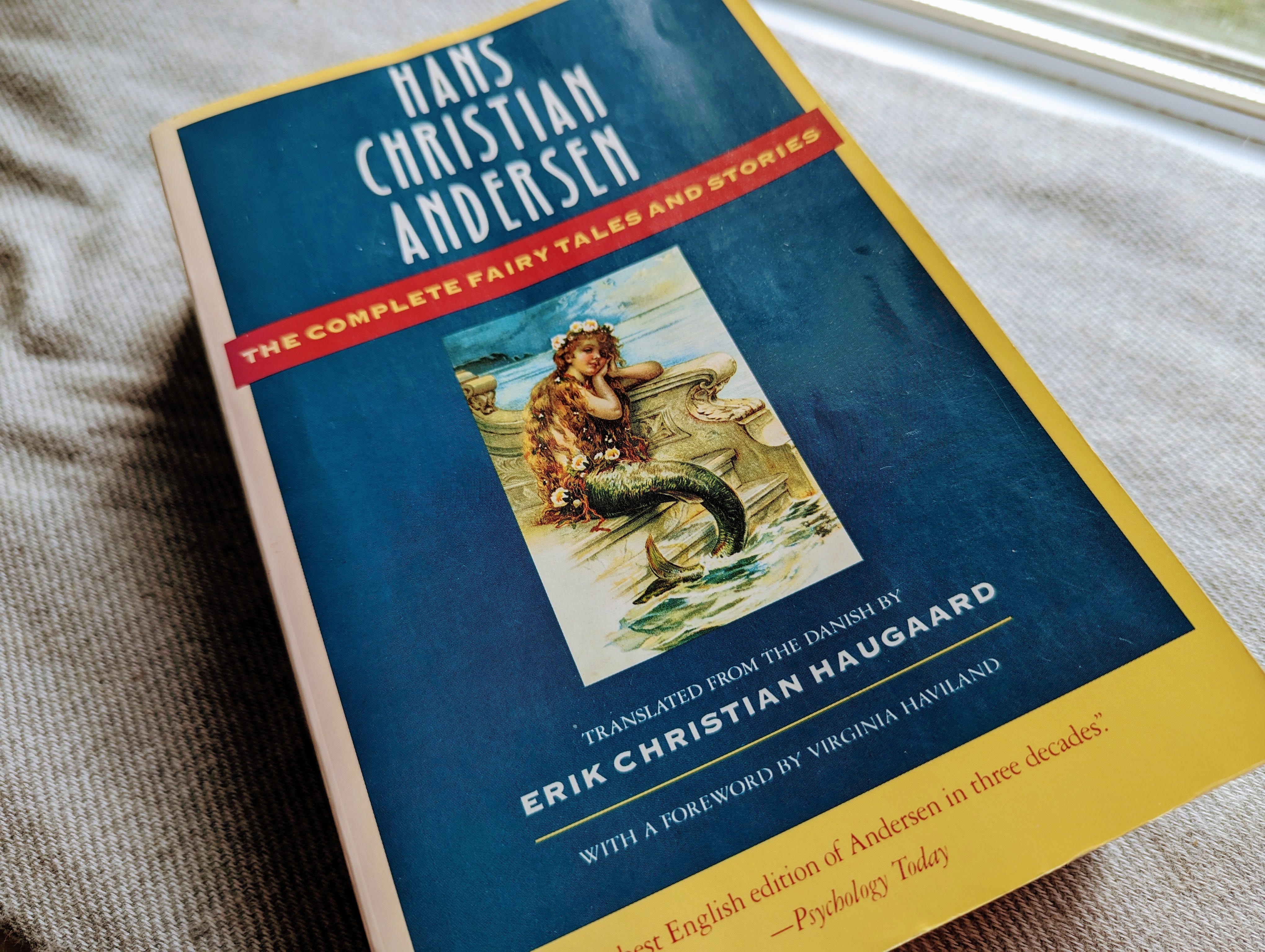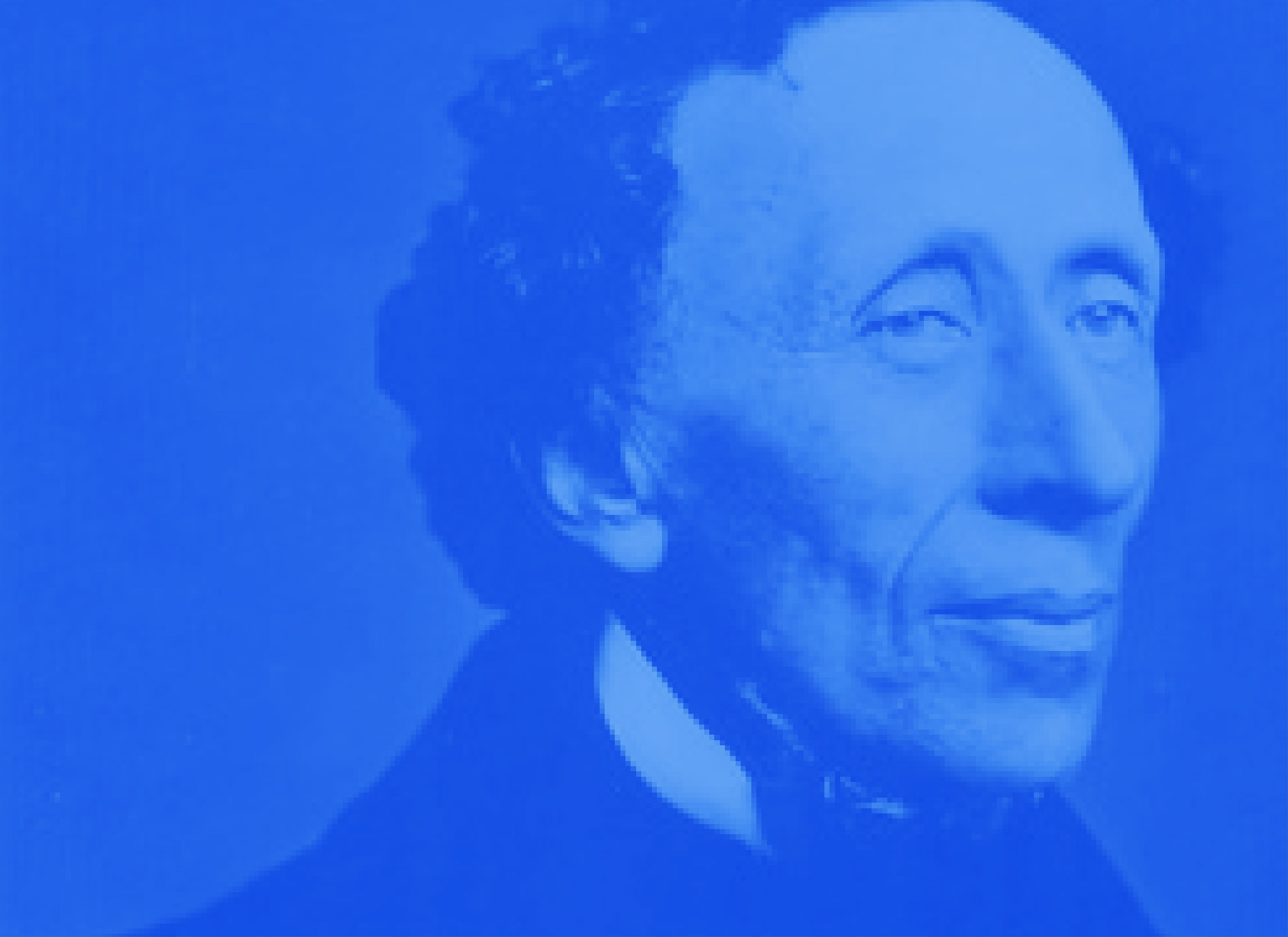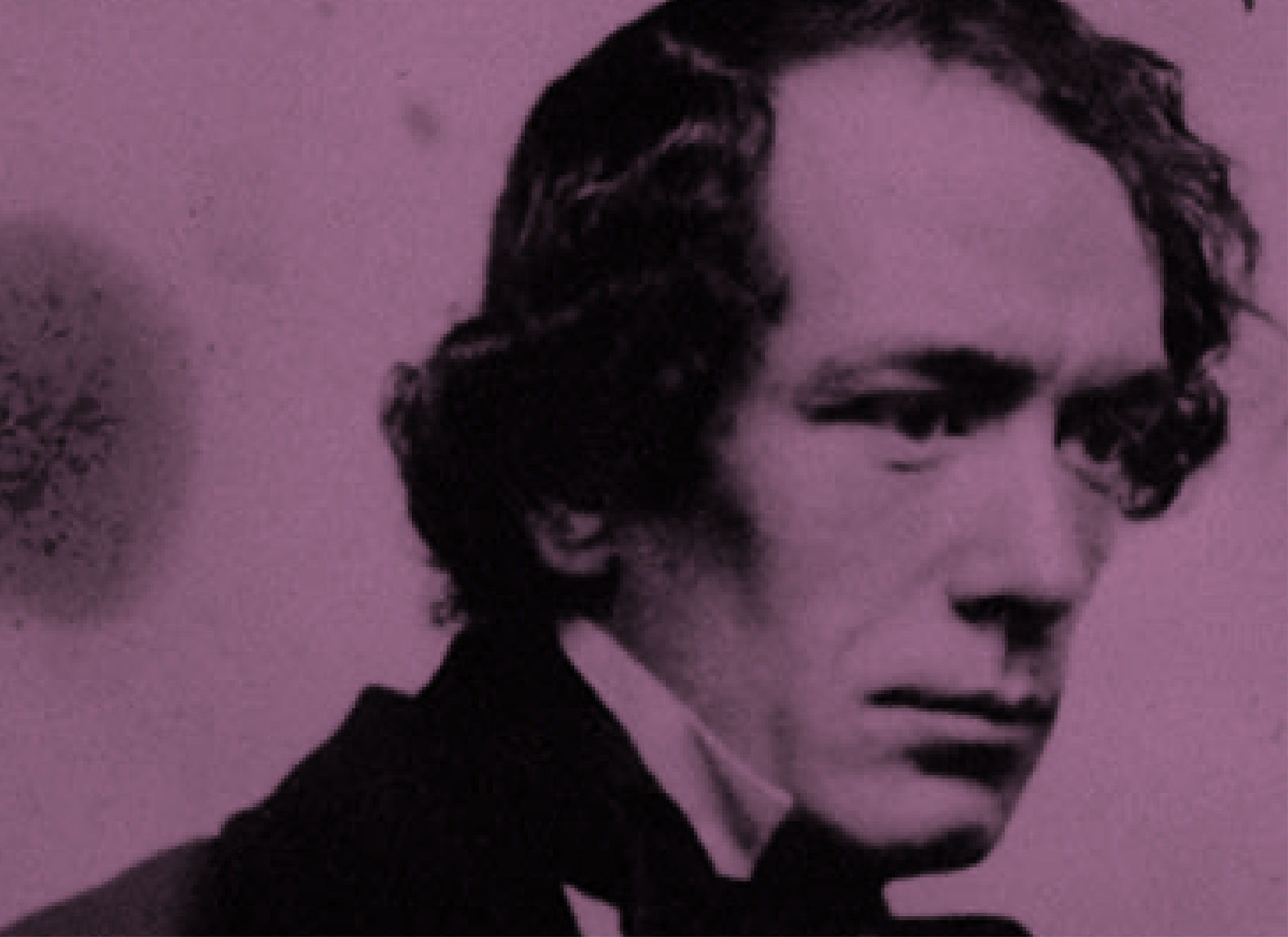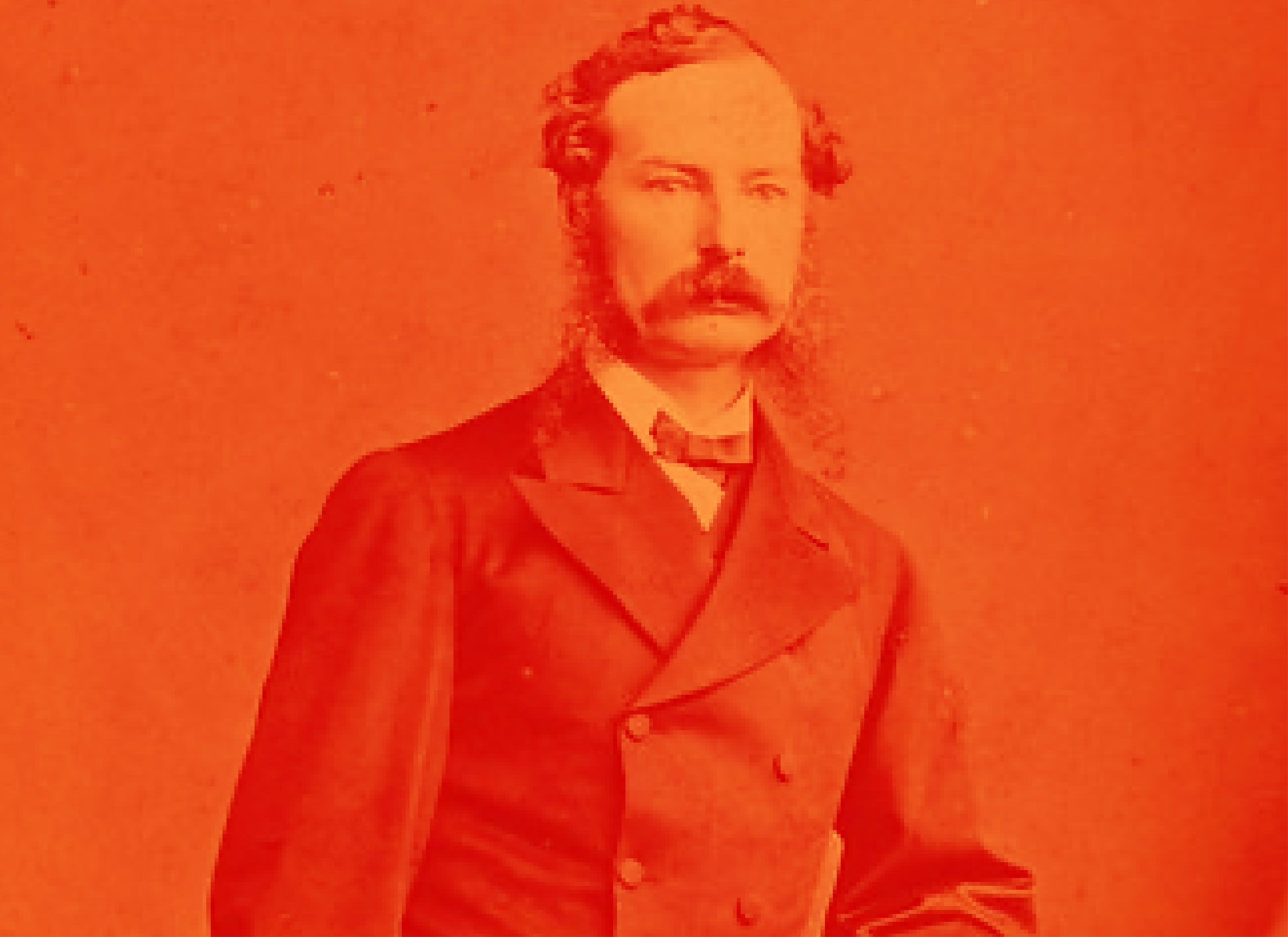Hans Christian Andersen - Once Upon a Timeless Storyteller
Andersen utilized the simple premise and structure of the fairy tale to transform his own theories regarding human nature into allegories, written in a conversational language that young audiences can both understand and enjoy.
— Encyclopedia Entry
Born on April 2, 1805, in Odense, Denmark, Andersen’s family struggled financially, and his father’s shoemaking business often faced difficulties. Their low socioeconomic class limited Andersen’s access to material comforts and educational opportunities. Despite his father’s limited means, he cherished books and shared stories, giving Hans an unconventional education. Hans declared reading as his cherished pastime in his diary; this, with his skill in listening, shaped him into the remarkable storyteller that made his mark on history.
His story as a writer began early in his life; Andersen moved to Copenhagen in 1822 to pursue writing and absorb the literary and artistic culture around him. At first, he concentrated on poetry and theater, but his venture into the fairy tale world is what many know him for and his influence on Children’s Literature, being stories for all ages.
Crafting Fairytales
How my day goes: up at 8 o’clock and drink coffee; putter around and write until 10 o’clock; then walk up along the long, tree-lined drive and out the gate to the path through the field to Hollufgaard; look at the strait and wander back; read, sew, put things in order; and lunch at 12 o’clock with a glass of port. Then a short rest and after that, as before, an hour’s walk. It is the same route, and I take a little farther out in the other direction. Read and write until around 4 o’clock, get dressed; and dinner is from 4:00 to 5:00.
— The Diary of Hans Christian Anderson
Andersen gained recognition as a writer in 1829 when he published a short story titled “A Journey on Foot from Holmen’s Canal to the East Point of Amager.” He published a play, a book of poetry, and a travelogue. Thanks to a grant from the king, he got the opportunity to travel across Europe and develop his body of work. In 1835, he published The Improvisatore, a novel based on his time in Italy.
That same year, he started writing fairy tales. Andersen’s first book of fairy tales debuted with the title “Fairy Tales Told for Children.” Thus began his journey into crafting stories that would become his signature. The volume featured classics such as “The Tinderbox,” “The Princess and the Pea,” and “Little Claus and Big Claus,” each introducing readers to an array of colorful characters and captivating storylines.
Through time, Andersen continued writing his beloved fairy tales, among them being one of his most cherished pieces: “The Little Mermaid,” in 1836. In 1837, Andersen published another famous story, “The Emperor’s New Clothes.” He penned “The Little Match Girl” three years later, demonstrating his profound understanding of human nature.
Despite his writing success, Andersen wasn’t initially known for his children’s stories. His novels, O.T. and Only a Fiddler were critical favorites. Over the years, he continued writing for adults and children, producing several autobiographies, travel narratives, and poetry praising the Scandinavian people. However, his classic stories, such as The Little Mermaid and The Emperor’s New Clothes, were overlooked by critics and consumers.
In 1845, translations of Andersen’s folktales and stories in English started gaining foreign readers' attention. Andersen established a friendship with celebrated British novelist Charles Dickens and visited him in England in 1847 and again ten years later. His tales became classic English literature and substantially influenced future British children’s authors such as A.A. Milne and Beatrix Potter. Eventually, Andersen’s stories were discovered by Scandinavian readers and readers in the United States, Asia, and worldwide.
Modern Impact
It may be challenging for modern readers to envision how different Andersen’s tales and those that preceded him are. Andersen’s work often had a deeper moral or philosophical message, enthralling readers with the complexity of his stories. By exploring themes like beauty, compassion, self-acceptance, and the strength of the human spirit, Andersen’s tales have resonated with audiences for centuries.
In his career, Andersen composed over 150 works, including fairy tales, poems, travelogues, and novels. These pieces continue to be adapted into plays, films, and animations worldwide. More than just fairy tales, Hans Christian Andersen infused his writing with imagination and empathy. Nowadays, he is celebrated as one of literature’s greatest storytellers - and his stories remain beloved by adults and children.
Destructive Daydreamer
I will become famous,' Andersen wrote in his diary, underscoring that his professional drive to greatness was not the polite narcissism of the restrained and well-educated. His drive to greatness ran deep in the troubled psychic waters of his soul. Early on, his patrons recognized a powerful self-confidence in Andersen. He possessed a gritty drive to perform, a marvelous soprano voice (before it cracked), a gift for telling stories, and, along with all of this, an irritating ego.
— Noel Daniel
Andersen’s ability to engage in positive, constructive daydreaming and his unwavering determination were two specialties that made Andersen live up to his aspirations. Despite facing the haunting effects of his lower socioeconomic status and the need to cultivate courage in the face of rejection to enter high society, Andersen found just enough motivation to persist. Denmark’s favorable artistic climate during the Golden Age allowed him to secure an artist’s allowance, granting him the freedom to refine his writing skills. Despite eventually gaining recognition and mingling with royalty, Andersen remained burdened by a lingering sense of inadequacy, reminiscent of his longing for belonging during his time in the spinning room.
Andersen was forever dancing between self-assuredness and feelings of inferiority and emotional vulnerability. He never escaped feeling unequal to the royals, celebrities, and dignitaries he socialized with as his fame grew, writing in his diary, “I had and still have a feeling as though I were a poor peasant lad over whom a royal mantle is thrown.
— Noel Daniel

Select Anderson’s Work
Read Anderson’s work online
1835 Thumbelina
I love that every word in this story has a purpose in the story; there is nothing wasted in this text as it builds and journies through the house, the woods, the farm, and then the south. In the text, such lovely language allowed me to quickly imagine and engage with the story, like being transported to these characters as a flying spectator. The characters are swiftly filled with charm and personality as we go along with Thumbelina and her experiences. The story’s message is unmistakable, on life, greed, judging others, peer pressure, and patience, but never directed at the reader in a preaching manner; we can understand it naturally as we come to the ‘perfect’ storybook ending. The one thing that I wish this story had more of was surprise and unpredictability; after the may-bug, I could predict much of the story until the ending.
1837 Emperor’s New Clothes
A unique and creative story, but less vividly written than Thumbelina, but I enjoyed it the same. This story was more repetitious and went a little long for my taste. I love the message of something being widely accepted as accurate or professed as being praiseworthy due to the unwillingness of the general population to criticize it or be seen as going against popular opinion. This message is unique and something I have yet to notice much in other literature for children or adults.
1837 The Little Mermaid
In the beginning, Hans Christian Andersen spends much time building up this world and creating this beyond-imagination whimsical land for us to visualize. The opening line, “Far, far from land, where the waters are as blue as the petals of the cornflower and as clear as glass, there, where no anchor can reach the bottom, live the mer-people.” is instantly capturing my interest and desire to keep reading more of Andersen’s word choices and almost poetic imagery. The text also weaves old sailor tales within the story, creating a great sense of realism. All this contrasts with dark themes of cutting skin and tongue, body deformation, and murder. Ultimately, this all culminates into a story of loving someone more than yourself, the reward being greater than being loved in return, and a cautionary tale that one cannot achieve true acceptance by falsifying one’s genuine identity. No matter how much suffering and sacrifice one undergoes, fundamental change for another has no real reward.
1842 Sandman
I enjoy the narrative difference (with this narrator directly talking to the reader) in this story and how it is arranged with the broken-down days into mini stories. What I found most interesting was the flow of the stories and how they wove together; as I was reading, they felt equal parts nonsensical and another part thought-provoking. Then we get to the end and have this idea of the innocence of childhood, good and bad, and even death.
1843 The Nightingale
“He has my high imperial favor, and if he is not forthcoming I will have the whole court punched in the stomach, directly after supper.” What I enjoy most about the quoted line beforehand is that it feels like such a style difference from the feel of the rest of the text. Still, in weaving these moments into the story, this distinct realness and innocence are added; it’s an indescribable blend that gives the story a distinctness. The overall story is fantastic and delightfully unexpected, with a grand ending. I loved the story’s message of loyalty and artificial/technology vs reality/nature.
1844 The Fir Tree
“Only that one,” the tree answered. “I heard it on the happiest evening of my life, but I did not know then how happy I was.” The text is such an elegant and easy-to-read story. A lovely story, and the message is fantastic; a heartwarming tale about enjoying the good around you rather than always looking forward to something better or in the future.
More Articles on Anderson
The Marginalian: The Fairy Tales of Hans
Thank you,
Caleb




